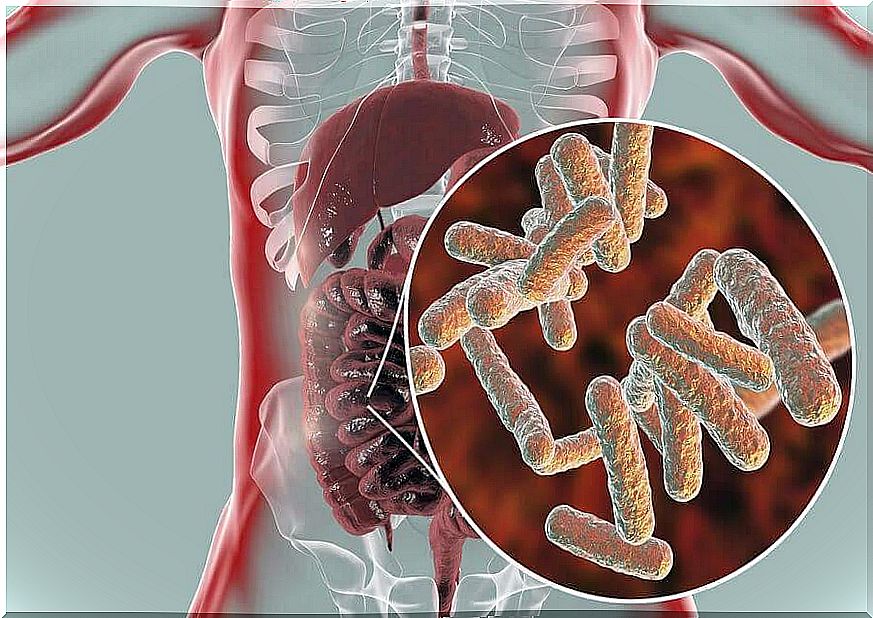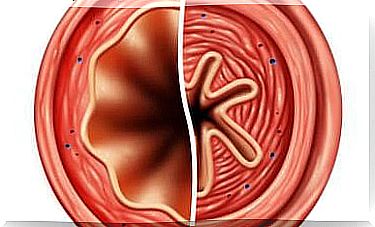Does Fibromyalgia Have A Link With The Intestinal Flora?
According to some studies, fibromyalgia could be linked to the fairly large presence of certain bacteria in the intestinal flora. Likewise, the intensity of the symptoms would also vary depending on this. Although more studies on the subject are still needed to obtain conclusive results, this is an avenue to consider when considering new treatments.

In recent years, the intestinal flora has been the subject of very curious studies. It corresponds to all the living microorganisms that live in our intestines. These microorganisms are bacteria, viruses and even fungi.
The intestinal flora fulfills many essential functions for our organism. Bacteria are particularly essential for properly digesting food, but this is not their only function.
The composition of the intestinal flora is associated with many disorders and diseases including obesity. Here we explain how it is linked with fibromyalgia, a disease characterized by chronic pain.
What is fibromyalgia?
Fibromyalgia is a complex disease that affects around 3% of the population. The prevalence of this disease is much higher in women than in men. It is a chronic disorder characterized by generalized musculoskeletal pain.
There is no observable cause for this pain, which is usually accompanied by other symptoms such as fatigue, insomnia and mood swings. The root cause of this condition appears to be an alteration in the way the brain processes painful stimuli, which is why they intensify.
Healthcare professionals have been able to detect a few triggers for fibromyalgia in many patients. Some of the triggers include stress and infections. And for some time now, researchers have been interested in the possible link between the intestinal flora and fibromyalgia.

How does the intestinal flora relate to fibromyalgia?
As we said above, the intestinal flora corresponds to all the microorganisms that live in our digestive system. These microorganisms are bacteria, fungi and viruses, and all of them have a strong connection with our bodies.
In recent years, science has been able to demonstrate that there is a link between the intestinal flora and our body. The composition of this flora varies from person to person. Concretely, it seems to interfere in many aspects of our health.
As part of this study conducted by McGill University, researchers observed the intestinal flora of several women. The sample included 156 women in total, 77 of whom had fibromyalgia.
Researchers’ observations on the intestinal flora of women with fibromyalgia
The study focused on the symptom of pain. The results revealed many differences in the composition of the gut flora between women with fibromyalgia and those without.
The first observation was as follows: the symptoms of the disease were linked to an alteration in the quantity of bacteria. The intensity of the symptoms would also have a link with the composition of the intestinal flora: the women who felt a strong pain and a lot of fatigue had a greater quantity of certain bacteria.
Nonetheless, the study posed a new problem: It is still unclear whether these changes in the gut microbiota are the root cause of fibromyalgia or simply a feature of the disease. To find out, we need to find out whether these changes only occur with fibromyalgia or if the same is true of other diseases that are characterized by chronic pain. The answer to this question would solve the problem.

What does the link between the intestinal flora and fibromyalgia assume?
The link between intestinal flora and fibromyalgia opens up a wide range of possibilities. It would be possible to develop new treatments and new diagnostic techniques and, thanks to this, to better control the disease.
Moreover, the modification of the intestinal flora is already one of the techniques used to treat certain pathologies. Since fibromyalgia is a truly disabling disease, this hypothesis implies real hope for the future of patients.









